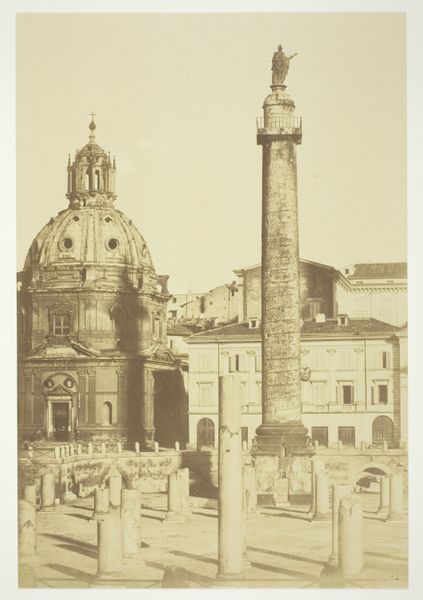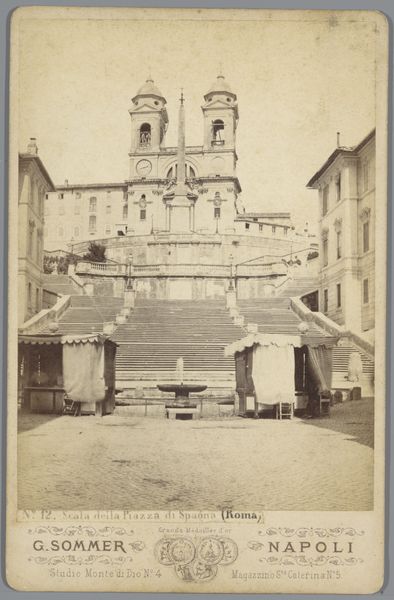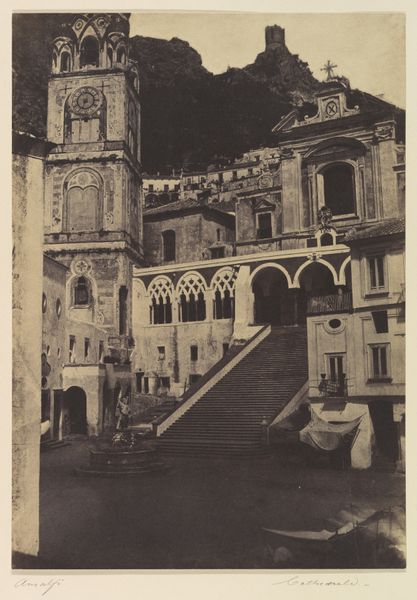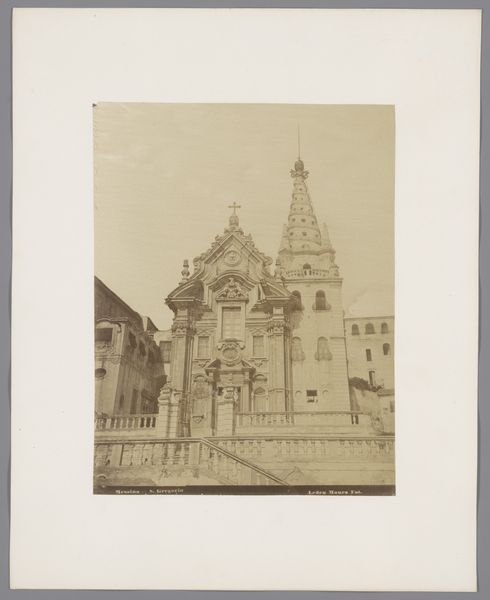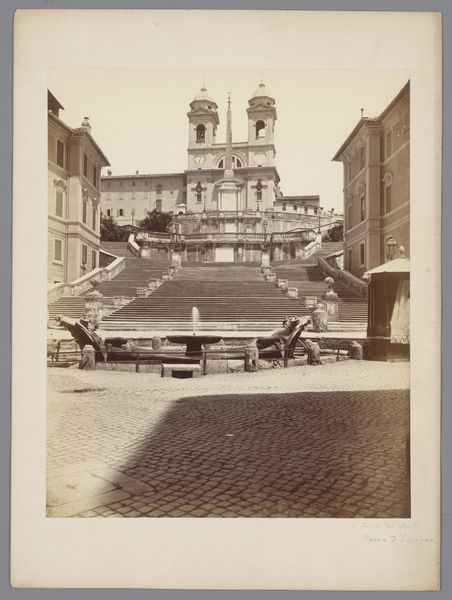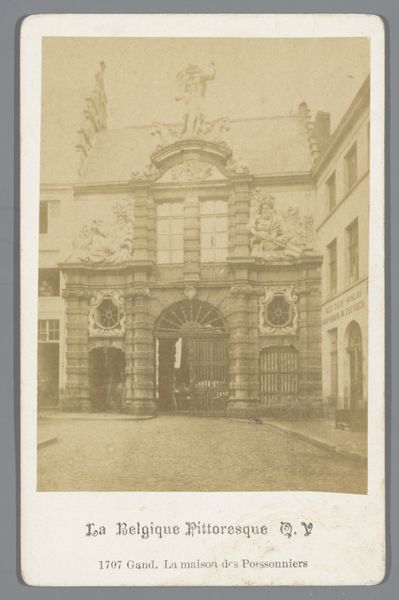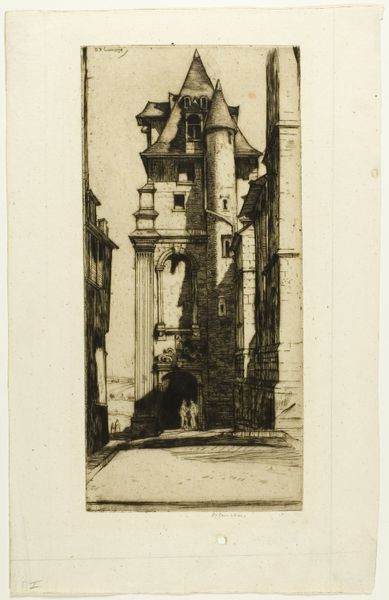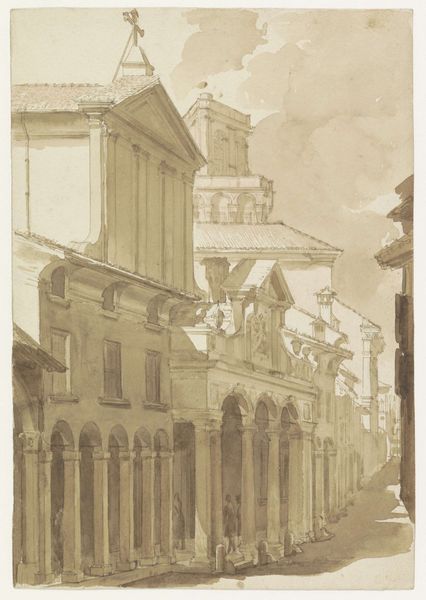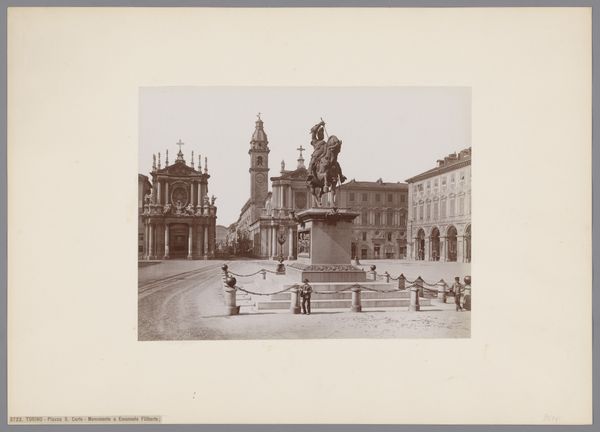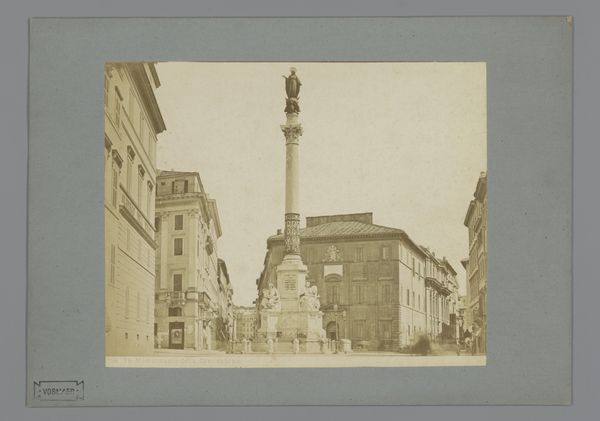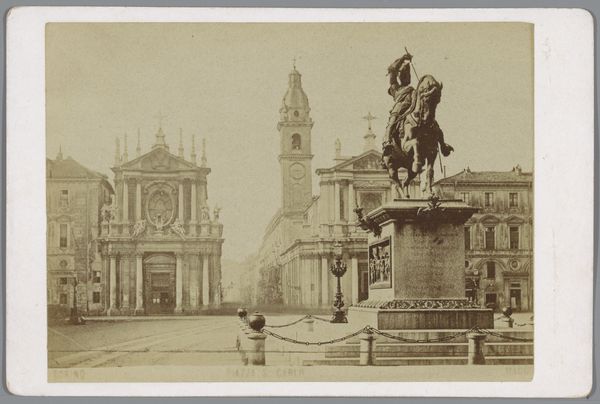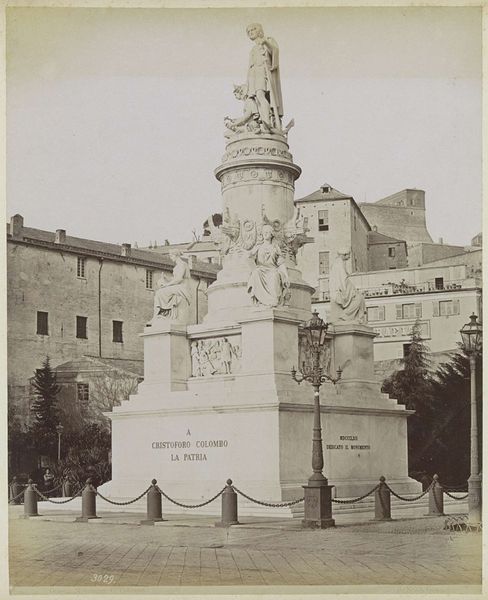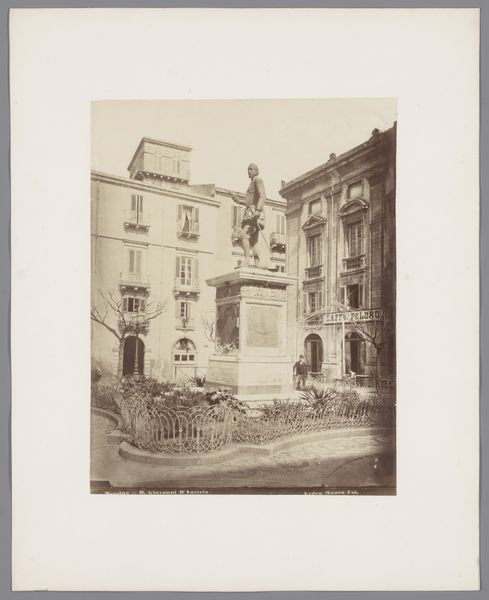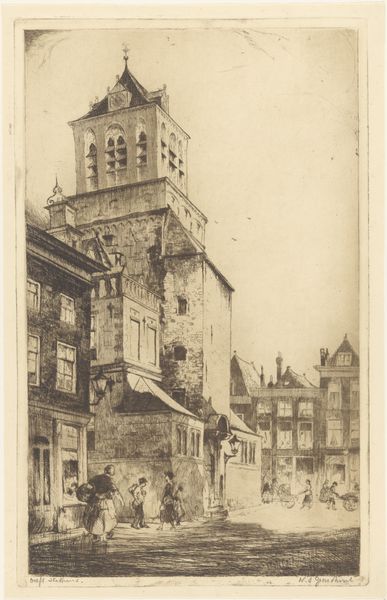
print, daguerreotype, paper, photography
# print
#
daguerreotype
#
paper
#
photography
#
ancient-mediterranean
#
cityscape
Dimensions: 21.2 × 16.6 cm (image); 24.6 × 19.6 cm (paper)
Copyright: Public Domain
Editor: This daguerreotype, "Celebrated Obelisk, Naples" by Rev. Calvert R. Jones, made in 1846 and preserved on paper, really captures the feel of a bustling Italian cityscape, but in such a muted, almost dreamlike way. What layers of meaning do you see woven into the symbols presented here? Curator: I am struck by how Jones captures Naples's deep cultural memory. The obelisk itself acts as a cultural touchstone; what does it evoke for you? Is it a sense of triumph? Perhaps the Baroque's grand pronouncements of faith or civic pride? Editor: Definitely a sense of triumph, and power. Obelisks always feel so assertive, reaching toward the sky. Curator: They borrow this symbolism from ancient Egypt; rulers, gods, and monumental power. And that visual language persists, right? The figures adorning it borrow from biblical tales, stories that shape the identity of the Neapolitan people even now. Notice how the religious architecture flanks the obelisk. Does this arrangement feel accidental, or intentional? Editor: It feels very intentional. The way the architecture cradles the obelisk elevates it; it almost merges the city and the divine in a way. Curator: Precisely! Photography, especially early photography, wasn't just about recording. It became a way to process identity, belief, and belonging. Think of the light captured by the buildings… doesn’t that manipulation of the real almost solidify the presence of the figures we see on the monument, creating another form of storytelling? Editor: That’s fascinating, looking at it like a narrative captured in a moment. I hadn't considered that level of intent. Curator: I think early photographers like Jones often utilized these compositional and thematic choices to offer profound insight, reflecting not just what Naples looked like, but also how it understood itself. What are your final thoughts about this photographic window into the past? Editor: I leave with a deeper understanding of the way art holds both memory and intention; seeing is believing and knowing. Thank you for your expertise in demystifying visual works!
Comments
No comments
Be the first to comment and join the conversation on the ultimate creative platform.
